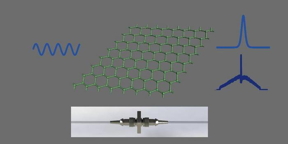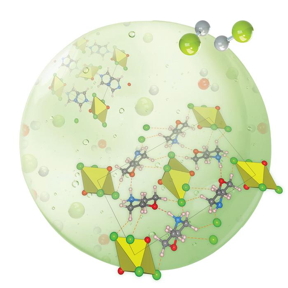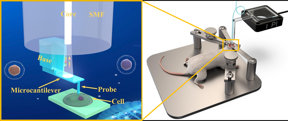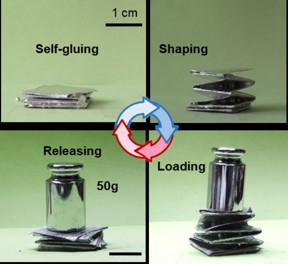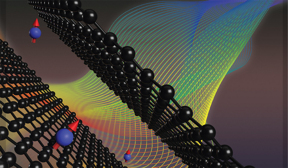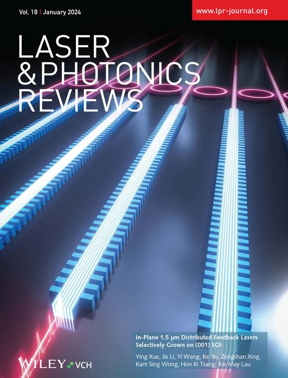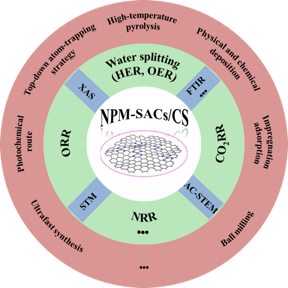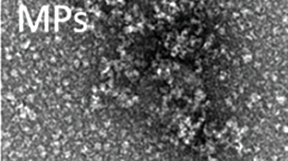Home > Press > Researchers discover materials exhibiting huge magnetoresistance
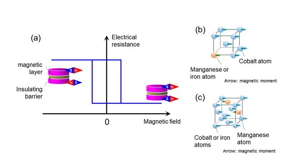 |
| (a) A schematic diagram of a tunnel magnetoresistive device and magnetoresistance. (b) A schematic diagram of the crystal of the metastable body-centered cubic cobalt-manganese alloy studied. (c) A schematic diagram of the face-centered cubic structure, which is one of the thermodynamically stable phases of cobalt-manganese alloys. CREDIT Shigemi Mizukamai and Tomohiro Ichinose |
Abstract:
A group of researchers from Tohoku University has unveiled a new material that exhibits enormous magnetoresistance, paving the way for developments in non-volatile magnetoresistive memory (MRAM).
Researchers discover materials exhibiting huge magnetoresistance
Sendai City, Japan | Posted on June 9th, 2023
Today, the demand for advancements in hardware that can efficiently process large amounts of digital information and in sensors has never been greater, especially with governments deploying technological innovations to achieve smarter societies.
Much of this hardware and sensors rely on MRAM and magnetic sensors, and tunnel magnetoresistive devices make up the majority of such devices.
Tunnel magnetoresistive devices exploit the tunnel magnetoresistance effect to detect and measure magnetic fields. This is tied to the magnetization of ferromagnetic layers in magnetic tunnel junctions. When the magnets are aligned, a low resistance state is observed, and electrons can easily tunnel through the thin insulating barrier between them. When the magnets are not aligned, the tunneling of electrons becomes less efficient and leads to higher resistance. This change in resistance is expressed as the magnetoresistive ratio, a key figure in determining the efficiency of tunneling magnetoresistive devices. The higher the magnetoresistance ratio, the better the device is.
Current tunnel magnetoresistive devices comprise magnesium oxide and iron-based magnetic alloys, like iron-cobalt. Iron-based alloys have a body-centered cubic crystal structure in ambient conditions and exhibit a huge tunnel magnetoresistance effect in devices with a rock salt-type magnesium oxide.
There have been two notable studies using these iron-based alloys that produced magnetoresistive devices displaying high magnetoresistance ratios. The first in 2004 was by the National Institute of Advanced Industrial Science and Technology in Japan and IBM; and the second came in 2008, when researchers from Tohoku University reported on a magnetoresistance ratio exceeding 600% at room temperature, something that jumped to 1000% with temperatures near zero kelvin.
Since those breakthroughs, various institutes and companies have invested considerable effort in honing device physics, materials, and processes. Yet aside from iron-based alloys, only some Heusler-type ordered magnetic alloys have displayed such enormous magnetoresistance.
Dr. Tomohiro Ichinose and Professor Shigemi Mizukami from Tohoku University recently began exploring thermodynamically metastable materials to develop a new material capable of demonstrating similar magnetoresistance ratios. To do so, they focused on the strong magnetic properties of cobalt-manganese alloys, which have a body-centered cubic metastable crystal structure.
“Cobalt-manganese alloys have face-centered cubic or hexagonal crystal structures as thermodynamically stable phases. Because this stable phase exhibits weak magnetism, it has never been studied as a practical material for tunnel magnetoresistive devices,” said Mizukami.
Back in 2020, the group reported on a device that used a cobalt-manganese alloy with metastable body-centered cubic crystal structure.
Using data science and/or high-throughput experimental methods, they built upon this discovery, and succeeded in obtaining huge magnetoresistance in devices by adding a small amount of iron to the metastable body-centered cubic cobalt-manganese alloy. The magnetoresistance ratio was 350% at room temperature and also exceeded 1000% at a low temperature. Additionally, the device fabrication employed the sputtering method and a heating process, something compatible with current industries.
“We have produced the third instance of a new magnetic alloy for tunneling magnetoresistive devices showing huge magnetoresistance, and it sets an alternative direction of travel for future improvements,” adds Mizukami.
####
For more information, please click here
Contacts:
Public Relations
Tohoku University
Copyright © Tohoku University
If you have a comment, please Contact us.
Issuers of news releases, not 7th Wave, Inc. or Nanotechnology Now, are solely responsible for the accuracy of the content.
| Related Links |
| Related News Press |
News and information
![]() Single quantum bit achieves complex systems modeling June 9th, 2023
Single quantum bit achieves complex systems modeling June 9th, 2023
![]() Quantum materials: Electron spin measured for the first time June 9th, 2023
Quantum materials: Electron spin measured for the first time June 9th, 2023
![]() Liquid metal sticks to surfaces without a binding agent June 9th, 2023
Liquid metal sticks to surfaces without a binding agent June 9th, 2023
![]() Graphene-based Carbocatalysts: Synthesis, Properties, and Applications—Beyond Boundaries June 9th, 2023
Graphene-based Carbocatalysts: Synthesis, Properties, and Applications—Beyond Boundaries June 9th, 2023
Magnetism/Magnons
![]() Make them thin enough, and antiferroelectric materials become ferroelectric February 10th, 2023
Make them thin enough, and antiferroelectric materials become ferroelectric February 10th, 2023
![]() Spin photonics to move forward with new anapole probe November 4th, 2022
Spin photonics to move forward with new anapole probe November 4th, 2022
![]() New era of two-dimensional ferroelectrics: Reviewing layered van-der-Waals ferroelectrics for future nanoelectronics October 28th, 2022
New era of two-dimensional ferroelectrics: Reviewing layered van-der-Waals ferroelectrics for future nanoelectronics October 28th, 2022
Possible Futures
![]() USTC enhances fluorescence brightness of single silicon carbide spin color centers June 9th, 2023
USTC enhances fluorescence brightness of single silicon carbide spin color centers June 9th, 2023
![]() Single quantum bit achieves complex systems modeling June 9th, 2023
Single quantum bit achieves complex systems modeling June 9th, 2023
![]() Advances in nanotechnology application in biosafety materials A crucial response to COVID-19 pandemic June 9th, 2023
Advances in nanotechnology application in biosafety materials A crucial response to COVID-19 pandemic June 9th, 2023
![]() Breaking through the limits of stretchable semiconductors with molecular brakes that harness light June 9th, 2023
Breaking through the limits of stretchable semiconductors with molecular brakes that harness light June 9th, 2023
Chip Technology
![]() USTC enhances fluorescence brightness of single silicon carbide spin color centers June 9th, 2023
USTC enhances fluorescence brightness of single silicon carbide spin color centers June 9th, 2023
![]() Breaking through the limits of stretchable semiconductors with molecular brakes that harness light June 9th, 2023
Breaking through the limits of stretchable semiconductors with molecular brakes that harness light June 9th, 2023
![]() Laser direct writing of Ga2O3/liquid metal-based flexible humidity sensors May 12th, 2023
Laser direct writing of Ga2O3/liquid metal-based flexible humidity sensors May 12th, 2023
![]() Breakthrough in the optical properties of MXenes – two-dimensional heterostructures provide new ideas May 12th, 2023
Breakthrough in the optical properties of MXenes – two-dimensional heterostructures provide new ideas May 12th, 2023
Memory Technology
![]() Approaching the terahertz regime: Room temperature quantum magnets switch states trillions of times per second January 20th, 2023
Approaching the terahertz regime: Room temperature quantum magnets switch states trillions of times per second January 20th, 2023
Sensors
![]() Laser direct writing of Ga2O3/liquid metal-based flexible humidity sensors May 12th, 2023
Laser direct writing of Ga2O3/liquid metal-based flexible humidity sensors May 12th, 2023
![]() New family of wheel-like metallic clusters exhibit unique properties April 14th, 2023
New family of wheel-like metallic clusters exhibit unique properties April 14th, 2023
![]() Nanobiotechnology: How Nanomaterials Can Solve Biological and Medical Problems April 14th, 2023
Nanobiotechnology: How Nanomaterials Can Solve Biological and Medical Problems April 14th, 2023
![]() Diamond cut precision: University of Illinois to develop diamond sensors for neutron experiment and quantum information science April 14th, 2023
Diamond cut precision: University of Illinois to develop diamond sensors for neutron experiment and quantum information science April 14th, 2023
Discoveries
![]() When all details matter — Heat transport in energy materials June 9th, 2023
When all details matter — Heat transport in energy materials June 9th, 2023
![]() Advances in nanotechnology application in biosafety materials A crucial response to COVID-19 pandemic June 9th, 2023
Advances in nanotechnology application in biosafety materials A crucial response to COVID-19 pandemic June 9th, 2023
![]() Breaking through the limits of stretchable semiconductors with molecular brakes that harness light June 9th, 2023
Breaking through the limits of stretchable semiconductors with molecular brakes that harness light June 9th, 2023
Announcements
![]() Liquid metal sticks to surfaces without a binding agent June 9th, 2023
Liquid metal sticks to surfaces without a binding agent June 9th, 2023
![]() Graphene-based Carbocatalysts: Synthesis, Properties, and Applications—Beyond Boundaries June 9th, 2023
Graphene-based Carbocatalysts: Synthesis, Properties, and Applications—Beyond Boundaries June 9th, 2023
![]() When all details matter — Heat transport in energy materials June 9th, 2023
When all details matter — Heat transport in energy materials June 9th, 2023
Interviews/Book Reviews/Essays/Reports/Podcasts/Journals/White papers/Posters
![]() USTC enhances fluorescence brightness of single silicon carbide spin color centers June 9th, 2023
USTC enhances fluorescence brightness of single silicon carbide spin color centers June 9th, 2023
![]() Single quantum bit achieves complex systems modeling June 9th, 2023
Single quantum bit achieves complex systems modeling June 9th, 2023
![]() Advances in nanotechnology application in biosafety materials A crucial response to COVID-19 pandemic June 9th, 2023
Advances in nanotechnology application in biosafety materials A crucial response to COVID-19 pandemic June 9th, 2023
![]() Breaking through the limits of stretchable semiconductors with molecular brakes that harness light June 9th, 2023
Breaking through the limits of stretchable semiconductors with molecular brakes that harness light June 9th, 2023
- SEO Powered Content & PR Distribution. Get Amplified Today.
- EVM Finance. Unified Interface for Decentralized Finance. Access Here.
- Quantum Media Group. IR/PR Amplified. Access Here.
- PlatoAiStream. Web3 Data Intelligence. Knowledge Amplified. Access Here.
- Source: http://www.nanotech-now.com/news.cgi?story_id=57347
- :has
- :is
- :not
- $UP
- 10
- 10th
- 2008
- 2020
- 2023
- 28
- 28th
- 3rd
- 4th
- 7th
- 9th
- a
- AC
- accuracy
- Achieve
- Achieves
- adding
- Additionally
- Adds
- advanced
- advancements
- AI
- aligned
- All
- Alloy
- also
- alternative
- Ambient
- Ambient Conditions
- amount
- amounts
- an
- and
- Application
- approach
- April
- ARE
- artificial
- artificial intelligence
- AS
- At
- barrier
- because
- become
- becomes
- been
- began
- Better
- between
- binding
- Bit
- breakthroughs
- built
- built-in
- by
- came
- CAN
- capable
- carbon
- cellular
- Center
- CGI
- change
- Chips
- City
- click
- color
- COM
- comment
- Companies
- compatible
- complex
- computing
- conditions
- considerable
- content
- Conversion
- COVID-19
- credit
- crucial
- Crystal
- Current
- Cut
- data
- data science
- Demand
- demonstrating
- deploying
- details
- determining
- develop
- developing
- developments
- device
- Devices
- Diamond
- digital
- direct
- direction
- discover
- discovery
- displaying
- do
- dynamics
- easily
- effect
- efficiency
- efficient
- efficiently
- effort
- Electronic
- electrons
- employed
- end
- energy
- Enhances
- enormous
- enough
- Era
- especially
- essential
- Ether (ETH)
- exceeded
- exhibit
- Exhibiting
- exhibits
- experiment
- Exploit
- Exploring
- expressed
- fabricating
- family
- February
- Fields
- Figure
- films
- First
- flexible
- focused
- For
- Forward
- from
- functions
- future
- gif
- Governments
- greater
- Group
- Hardware
- harness
- Have
- High
- higher
- How
- HTML
- http
- huge
- IBM
- identify
- if
- illinois
- improvements
- in
- Inc.
- Including
- industrial
- industries
- inexpensive
- information
- innovations
- innovative
- insights
- instance
- Institute
- Intelligence
- invested
- IT
- January
- Japan
- jpg
- june
- Kelvin
- Key
- large
- layered
- layers
- lead
- Leads
- less
- levels
- like
- limits
- links
- Low
- machine
- Magnetism
- Magnets
- Majority
- make
- March
- material
- materials
- Matter
- May..
- measure
- measured
- measuring
- medical
- Memory
- metal
- metastable
- method
- methods
- molecular
- more
- move
- move forward
- Nanomaterials
- nanotechnology
- National
- Near
- net
- never
- New
- news
- notable
- November
- now
- observed
- obtaining
- october
- of
- on
- ONE
- only
- optical
- or
- Paving
- phase
- PHP
- Physics
- plastic
- plato
- Plato Data Intelligence
- PlatoData
- please
- Post
- posted
- Practical
- Precision
- press
- Press Release
- process
- processes
- Produced
- produces
- Professor
- properties
- propose
- proposed
- Protein
- provide
- Quantum
- quantum information
- ratio
- ratios
- recently
- regime
- Regulate
- release
- Releases
- rely
- Reported
- researcher
- researchers
- Resistance
- response
- responsible
- return
- Reveals
- reviewing
- Rock
- Room
- Said
- Save
- Science
- Science and Technology
- Search
- Second
- Semiconductors
- sensors
- Sets
- Share
- showing
- Silicon
- silicon carbide
- similar
- Simple
- single
- small
- smarter
- So
- solely
- SOLVE
- some
- something
- Spin
- stable
- start
- State
- States
- storage
- strong
- structure
- studied
- studies
- submit
- such
- suitable
- Switch
- Systems
- technological
- Technology
- that
- The
- Them
- These
- they
- Third
- this
- those
- Through
- Tied
- times
- to
- tool
- transport
- travel
- Trevor
- trillions
- two
- unique
- university
- unveiled
- upon
- us
- used
- uses
- using
- various
- was
- Wave
- Way..
- we
- when
- which
- with
- without
- writing
- Yahoo
- yet
- you
- zephyrnet
- zero










